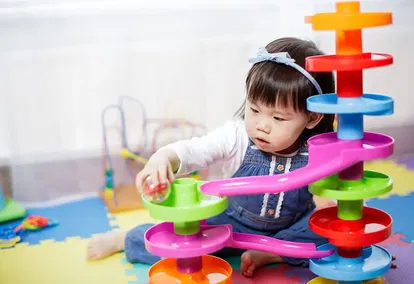
Creating an environment for preschoolers to feel safe and excited is important for Mission Friends leaders. By spending time thoughtfully arranging your classroom, you are creating a positive missions learning environment.
Below we’ve listed some tips and strategies for arranging your classroom to be more effective as a learning environment. But remember, the size of your room or the kind of furniture you have will not limit the missions learning experience. The learning experience comes from the activities provided. Preschoolers do not care if the furniture is new or well-used. They are excited to come to your class because they know you care. Preschoolers cannot wait to see what they will make during the art activities, what they will pretend play in the homeliving area, and what they will hear about the missionaries during group time.
Mission Friends Interest Areas
A preschool classroom is typically arranged around interest areas. Interest areas allow preschoolers to play and actively learn with the guidance of a Mission Friends leader. Interest areas suggested in the Mission Friends Leader are Art, Blocks, Books, Homeliving, Music and Movement, Nature, and Puzzles and Manipulatives. Most classrooms include an area designated for Group Time stories and related activities.
Classroom Size and Arrangement
Is your classroom large enough to include every interest area suggested in Mission Friends Leader? If not, determine what interest areas have the biggest impact on your preschoolers.
Combine areas if you need to. Perhaps art and nature can be grouped together. A shelf for books, puzzles, manipulatives, and instruments for music can be placed near the area for Group Time. Homeliving is typically the largest interest area and works best in a corner.
Use child-sized shelves and furniture as dividers to help separate the interest areas and allow leaders to see the preschoolers in each area. Place interest areas that are typically messy (art and nature activities) near a sink.
Consider occasionally moving the interest areas to keep the room fresh and clean.
Noise Level Considerations
Most classrooms are a blending of age groups due to space constraints or the number of teachers and preschoolers. If you have blended age groups, it is important to consider the noise level of each interest area. Arrange areas with low noise levels together, such as books, puzzles, and nature. Separate low noise level areas from other areas which tend to have a high noise level, such as art, blocks, and homeliving.
For ideas on managing a blended age group, see the blog “Teaching a Blended Mission Friends Class.”
Furniture Type and Arrangement
Consider which furniture to use for the arrangement of your classroom. Furniture selection is based on two factors: the church budget and the classroom space. Furniture should include age-appropriate tables and chairs, an easel for art activities, a shelf or container for puzzles, and a shelf or small table for nature.
Get down on your hands and knees to look at your room through the eyes of a preschooler. What does a preschooler see when she walks through the door? Where will the preschooler go first when he enters your classroom? Fill child-sized bookshelves with books and blocks. Use carpet squares or a large area rug for group time and music activities. A child-sized kitchen sink, stove, rocker, and a doll bed are appropriate for the homeliving area. If possible, use the permanent fixtures already present in your classroom for space efficiency.
For more information on classroom setup, check out these blogs:
by Beth Campbell